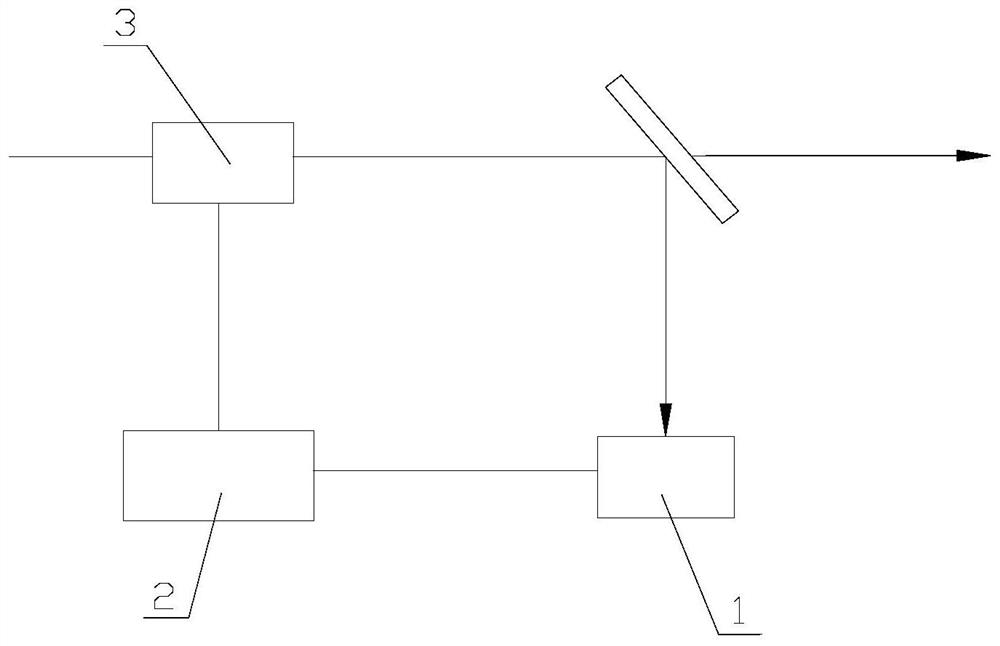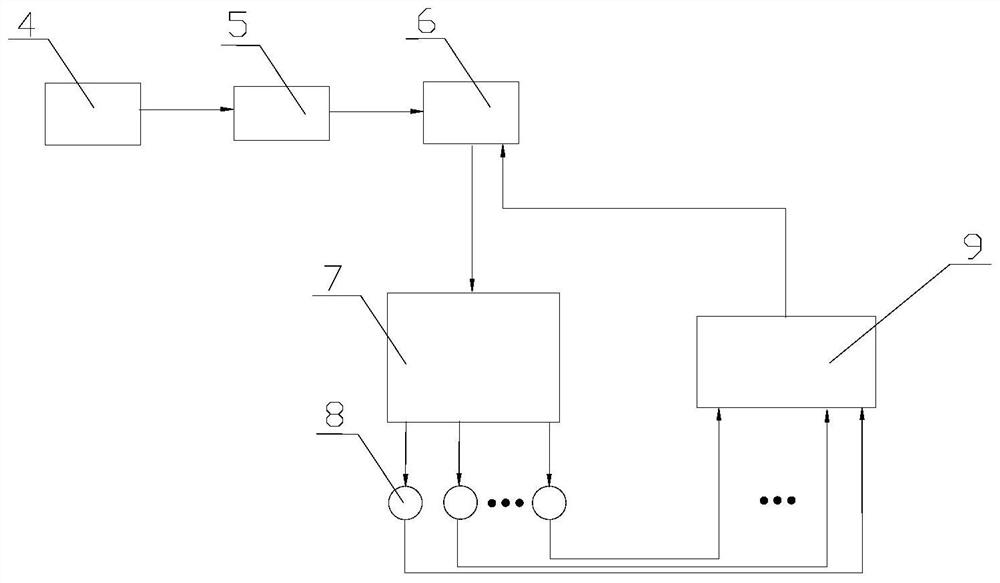An adaptive optics system based on all-optical neural network
A technology of adaptive optics and neural network, applied in the field of adaptive optics system, can solve the problems such as the inability to avoid the time-consuming link of analog-to-digital conversion, the difficulty of realizing KHz level control bandwidth, etc., and achieve the effect of low power consumption
- Summary
- Abstract
- Description
- Claims
- Application Information
AI Technical Summary
Problems solved by technology
Method used
Image
Examples
Embodiment 1
[0036] like figure 2 As shown, an adaptive optics system based on an all-optical neural network includes an all-optical neural network solver 7, a photovoltaic conversion array 8 and a high-voltage amplifier 9, wherein the target beam 4 passes through the optical channel including the boundary layer 5. Carrying the phase distortion information therein, the target beam 4 is reflected by the deformable mirror 6 to the all-optical neural network solver 7, and solved into the deformable mirror driving amount information (ie, the optical signal) defined by the beam intensity. The light beam 4 is the light beam emitted or reflected by the target, and the photovoltaic conversion array 8 is used to convert the driving quantity information of the deformable mirror into a weak electric analog signal, that is, the photovoltaic conversion array 8 converts the optical signal into an electric signal, and at the same time, the weak electric analog signal is processed by high voltage. The am...
Embodiment 2
[0043] like image 3 As shown, the same parts of this embodiment and the first embodiment will not be repeated, and the differences are:
[0044] The target beam is the beam emitted or reflected by the target 10 .
[0045] The deformable mirror 6 has 19 actuating units, and the actuating units are distributed as follows Figure 4 shown. During the training data acquisition process, 50,000 wavefront distortion distributions were randomly generated.
[0046] The all-optical neural network solver 7 is composed of 5 optical diffraction plates, and the cross-section of the optical diffraction plates is square, the side length of which is 1 mm, and the distance between adjacent optical diffraction plates is 100 microns. face like Figure 5 shown, where, image 3 The five optical diffraction plates shown are represented by pp1, pp2, pp3, pp4, and pp5 in order from top to bottom.
[0047] The photovoltaic conversion array 8 includes 19 conversion units in the same arrangement as...
PUM
 Login to View More
Login to View More Abstract
Description
Claims
Application Information
 Login to View More
Login to View More - R&D
- Intellectual Property
- Life Sciences
- Materials
- Tech Scout
- Unparalleled Data Quality
- Higher Quality Content
- 60% Fewer Hallucinations
Browse by: Latest US Patents, China's latest patents, Technical Efficacy Thesaurus, Application Domain, Technology Topic, Popular Technical Reports.
© 2025 PatSnap. All rights reserved.Legal|Privacy policy|Modern Slavery Act Transparency Statement|Sitemap|About US| Contact US: help@patsnap.com



